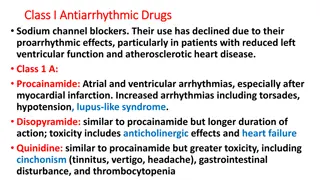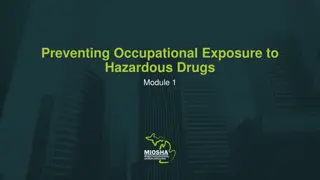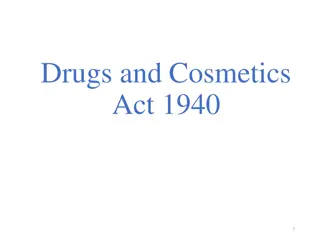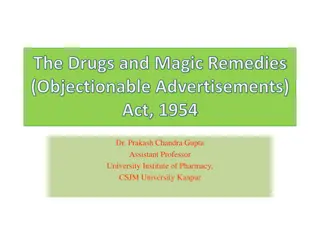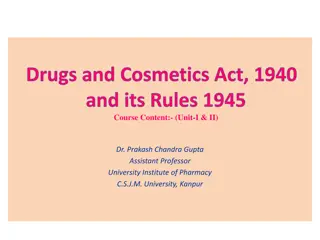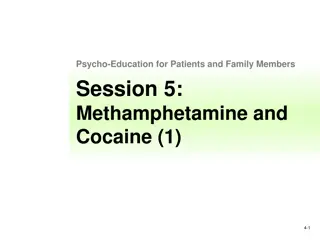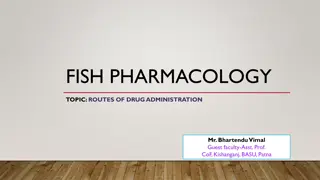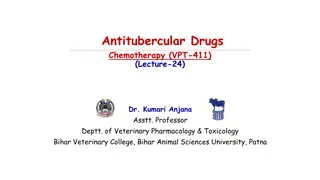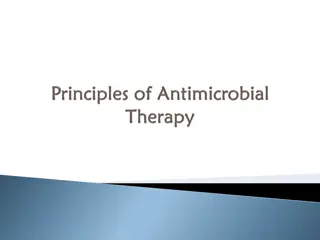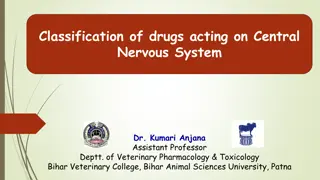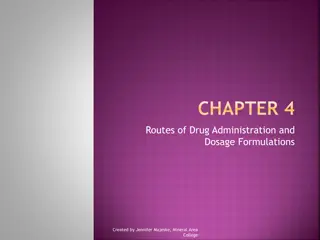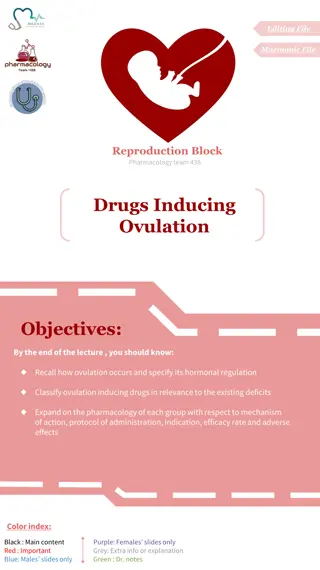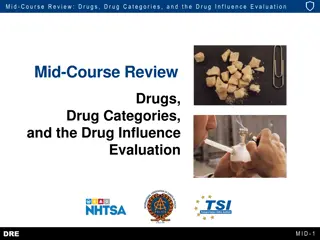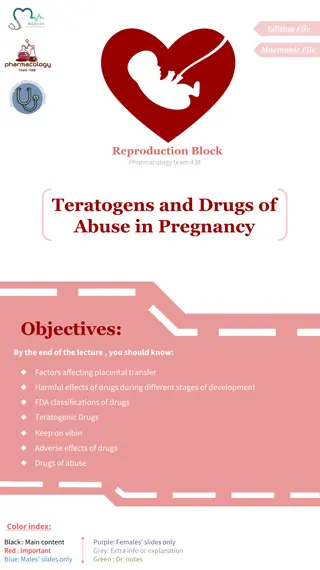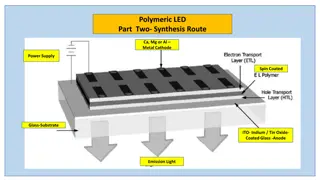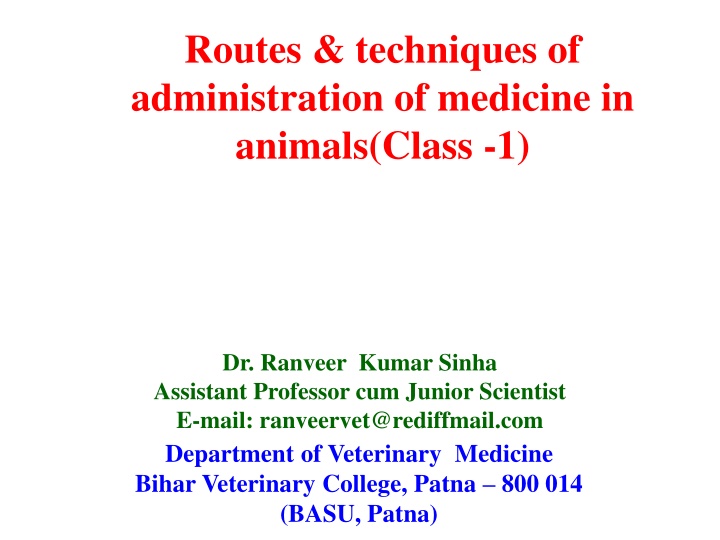
Routes & Techniques of Administration of Medicine in Animals - Dr. Ranveer Kumar Sinha
Learn about the different routes and techniques of administering medicine to animals, including oral, parenteral, topical, and more. Understand the advantages and disadvantages of each method and explore various forms of oral medications such as tablets, capsules, granules, and pastes. Gain insights from Dr. Ranveer Kumar Sinha, Assistant Professor cum Junior Scientist, on best practices for medicating animals.
Download Presentation

Please find below an Image/Link to download the presentation.
The content on the website is provided AS IS for your information and personal use only. It may not be sold, licensed, or shared on other websites without obtaining consent from the author. If you encounter any issues during the download, it is possible that the publisher has removed the file from their server.
You are allowed to download the files provided on this website for personal or commercial use, subject to the condition that they are used lawfully. All files are the property of their respective owners.
The content on the website is provided AS IS for your information and personal use only. It may not be sold, licensed, or shared on other websites without obtaining consent from the author.
E N D
Presentation Transcript
Routes & techniques of administration of medicine in animals(Class -1) Dr. Ranveer Kumar Sinha Assistant Professor cum Junior Scientist E-mail: ranveervet@rediffmail.com Department of Veterinary Medicine Bihar Veterinary College, Patna 800 014 (BASU, Patna)
Routes of administration Oral Parenteral IV IM IP IC SC Other Topical Rectal Intrauterine Intramammary
Advantages & Disadvantage of Different Routes Oral Advantages Usually least painful Can be administered by client Skin not penetrated, less risk of introducing infection Disadvantages Aspiration of medication - choking, pneumonia (eg paraffin to cats) Variable rate of absorption depending on patient, contents of gut, etc. Vomiting, irritation of gut (eg aspirin) Patients may not tolerate administration May be difficult to ensure correct dosage
Different form of Oral medications Tablet Capsule Granule Powder Paste Liquid
Tablet Compressed drug in a carrier such as sugar Often coated to protect drug inside from moisture to disguise unpleasant tastes to protect from gastric juices, slow down the breakdown of the drug for a slower release to avoid irritation to give the tablet a recognizable colour Usually scored into halves or quarters for ease of breakage for more accurate dosing Most common form of medication
Capsule, Granules/Powder & Paste Capsule Bullet-shaped, gelatin container Contains powder, granules or liquid Easier to swallow (smooth) No need for 'carrier Gelatin dissolves in stomach Granules/Powder Solid preparations Dissolved in water Mixed with feed Paste Semi solid preparation Usually in a water soluble base Via syringe Easy for owner to use Rabbit, guinea pig Horse (worming paste) Cat (worming paste)
Liquid Syrup Drugs contained in a concentrated sugar solution. Good for young animals/small doses Solution Drug in liquid form or dissolved in water (eg glucose solution). Suspension Insoluble particles float in liquid but settle when standing Needs to be mixed before use (shaken) Emulsion Two immiscible liquids (eg water and paraffin) Routes Directly into the mouth By stomach tube Very young animals, to reduce the risk of aspiration Large volumes of fluid.
Parenteral Preparations These are drugs that can be given by injection. All drugs in this form must be sterile. The most common routes of injection of drugs in small animal practice are iv ,im,ip,sc,ic. Injection Route depends on Type of drug Condition and temperament of patient Volume of the drug Required speed of action
Routes of injection Intradermal Intramuscular Intravenous Intraperitoneal Intracardiac Intrapleural Intra-articular Epidural Subconjunctival
Intradermal (ID) Into the dermis The living part of the surface layer Needs a very fine needle Causes a blister like appearance (bleb) if performed correctly allergy testing tuberculin testing Subcutaneous(S/C) Under the skin Most common site Loose skin over shoulder blades a good site Less painful than intramuscular injections Only for low irritant drugs Slow absorption if dehydrated Used for most vaccines
Systemic Drugs Some drugs cannot be applied directly where they are needed. Instead they need to travel through the animal s system until they get to where they are needed. These drugs are said to be given Systemic . Exam. Oral preparations Injections

